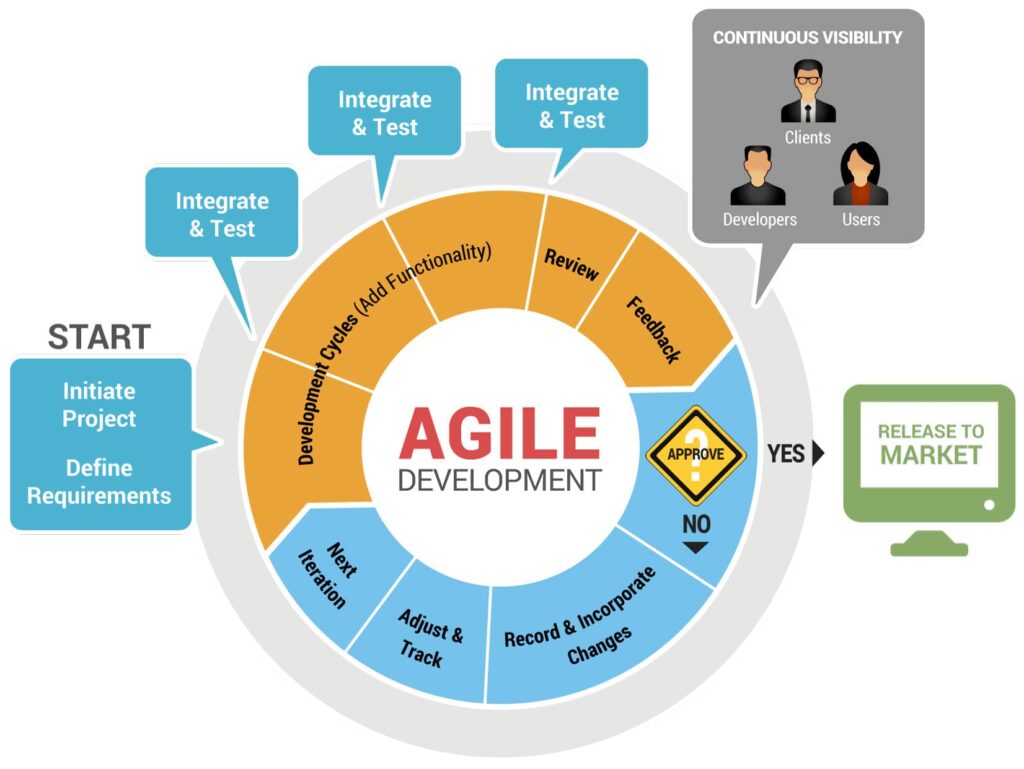Methodology
What is Agile Methodology?
The Agile software development methodology is one of the simplest and effective processes to turn a vision for a business need into software solutions. Agile is a term used to describe software development approaches that employ continual planning, learning, improvement, team collaboration, evolutionary development, and early delivery. It encourages flexible responses to change.


The agile method is based on giving high priority to customer participation, from the very beginning of the development cycle. The objective is to keep the client involved at every step so that they have a product that they are happy with at the end. This method saves the client money and time because the client tests and approves the product at each step of development. If there are defects or challenges, then changes can be made during production cycles to fix the issue.
Traditional models of project management would not find defects as early because they do not test as often. Typically (in traditional methods of production) defects that are not discovered at the different stages can find their way into the final product. This can result in increased overhead prices and client dissatisfaction.
The Agile Method is done in “sprints”, where the developers complete their tasks over 1-2 weeks before their next “sprint” where they are assigned their next 1-2 weeks tasks. The Agile Method is generally set up with a ticketing system, allowing for each “sprint” to be working on various new feature requests, bug fixes, or modifications sent in by customers, clients, or stakeholders. This method continues to improve the product until it is complete and delivered to the customer.

